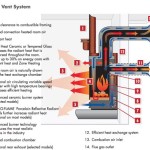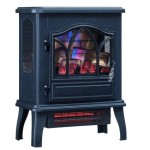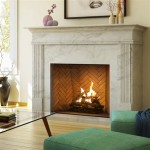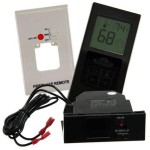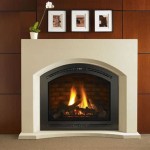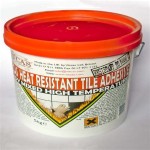Here is an article about indoor wood fireplaces in Sydney, formatted as requested: ```html
Indoor Wood Fireplaces in Sydney: A Comprehensive Guide
Indoor wood fireplaces offer a unique blend of aesthetic appeal and practical heating solutions, particularly appealing in Sydney's often cool winter months. Choosing the right indoor wood fireplace requires careful consideration of various factors, including the size of the space, heating efficiency requirements, local regulations, and personal preferences. This article provides a comprehensive guide to indoor wood fireplaces in Sydney, covering key aspects from selection to installation and maintenance.
Understanding the Appeal and Considerations of Wood Fireplaces
The enduring appeal of wood fireplaces lies in their ability to create a warm and inviting ambiance. The crackling fire, the scent of burning wood, and the radiant heat contribute to a sense of comfort and relaxation. Beyond the aesthetic benefits, wood fireplaces can serve as a supplementary heating source, potentially reducing reliance on central heating systems. However, potential buyers should be aware of several considerations before investing in a wood fireplace. These include the availability and cost of wood fuel, the need for regular maintenance and cleaning, and the potential environmental impact associated with wood burning.
Furthermore, adherence to local regulations is paramount. Sydney, like other urban areas, has specific guidelines regarding emissions from wood-burning appliances. Selecting a fireplace that meets or exceeds these standards is crucial to ensure compliance and minimize environmental impact. This typically involves choosing models with advanced combustion technologies that reduce smoke and particulate matter emissions.
Types of Indoor Wood Fireplaces Available in Sydney
The Sydney market offers a diverse range of indoor wood fireplace options, each with its own set of advantages and disadvantages. Understanding these differences is essential for making an informed decision.
Open Fireplaces: Open fireplaces are the traditional choice, characterized by their open hearth and direct exposure to the flames. While they offer the most visually appealing fire experience, they are also the least efficient in terms of heating. A significant portion of the heat generated escapes up the chimney, resulting in lower overall heating performance. Open fireplaces are generally suited for occasional use and primarily for aesthetic purposes.
Freestanding Wood Fireplaces: Freestanding wood fireplaces are self-contained units that can be placed anywhere in a room with proper venting and clearances. They offer better heating efficiency than open fireplaces due to their enclosed design. Freestanding models come in various styles, from traditional cast iron stoves to modern designs with clean lines. Their relatively easy installation and efficient heating make them a popular choice for many Sydney homes.
Insert Wood Fireplaces: Insert wood fireplaces are designed to be installed within an existing masonry fireplace. They provide a significant upgrade in heating efficiency compared to open fireplaces. Inserts typically feature a sealed firebox and a blower fan to circulate heat into the room. They are an excellent option for homeowners who want to improve the performance of an existing fireplace without undertaking a major renovation.
Slow Combustion Wood Fireplaces: Slow combustion fireplaces are engineered for high efficiency and prolonged burn times. They feature airtight fireboxes and sophisticated air control systems that regulate the rate of combustion. This results in cleaner burning and reduced emissions. Slow combustion fireplaces are ideal for providing consistent and long-lasting warmth, making them suitable for primary heating purposes.
Hydronic Wood Fireplaces: Hydronic wood fireplaces not only heat the room in which they are located but can also heat water for domestic hot water or radiant floor heating systems throughout the entire house. This type of fireplace is more complex to install and requires integration with a hydronic heating system, but it offers a highly efficient and environmentally friendly heating solution.
Key Considerations for Choosing and Installing an Indoor Wood Fireplace in Sydney
Selecting and installing an indoor wood fireplace involves several important steps to ensure safety, efficiency, and compliance with regulations.
Heating Needs and Room Size: Determine the size of the area that needs to be heated. Fireplaces are rated based on their heating capacity, typically measured in kilowatt hours (kW). Choose a fireplace with a heating capacity appropriate for the room size to avoid over or under-heating. A fireplace that is too small will struggle to heat the space adequately, while one that is too large may create an uncomfortable environment.
Efficiency Ratings and Emissions: Pay close attention to the energy efficiency rating and emissions performance of the fireplace. Look for models that meet or exceed Australian standards for emissions. Higher efficiency ratings translate to lower fuel consumption and reduced environmental impact. Consider models with features such as catalytic converters or secondary combustion chambers, which further reduce emissions.
Installation Requirements and Regulations: The installation of a wood fireplace must comply with local building codes and regulations. This typically involves obtaining permits and ensuring that the installation is carried out by a qualified professional. Proper venting is crucial to ensure that smoke and combustion gases are safely exhausted outside the home. Clearance requirements around the fireplace must also be adhered to minimize the risk of fire.
Fuel Source and Storage: Ensure a reliable source of dry, seasoned firewood. The type of wood used can significantly impact the performance and emissions of the fireplace. Hardwoods such as eucalyptus and ironbark are generally preferred for their high heat output and long burn times. Proper storage of firewood is essential to prevent moisture absorption, which can lead to inefficient burning and increased emissions. Store wood in a dry, well-ventilated area, away from the fireplace to minimize the risk of fire.
Chimney and Flue Maintenance: Regular inspection and cleaning of the chimney and flue are essential to ensure safe and efficient operation. Creosote, a flammable substance that accumulates in the chimney, can pose a significant fire hazard. It is recommended to have the chimney professionally cleaned at least once a year or more frequently if the fireplace is used regularly. A properly maintained chimney will also ensure adequate draft, which is essential for efficient combustion and the prevention of smoke entering the home.
Safety Features: Fireplaces come with various safety features, such as spark screens, door latches, and temperature sensors. Ensure that the fireplace has appropriate safety features to minimize the risk of burns or fires. Smoke detectors and carbon monoxide detectors should be installed in the vicinity of the fireplace to provide early warning in case of a malfunction or improper combustion.
Aesthetic Considerations: Choose a fireplace that complements the existing décor of the home. Fireplaces are available in a wide range of styles and finishes, from traditional to contemporary. Consider the materials, colors, and design elements of the fireplace to ensure that it integrates seamlessly with the overall aesthetic of the room.
Professional Installation: Engaging a qualified and licensed installer is crucial for ensuring that the fireplace is installed correctly and safely. A professional installer will be familiar with local building codes and regulations and will have the expertise to properly vent the fireplace and ensure that it meets all safety requirements. They can also provide valuable advice on the selection and maintenance of the fireplace.
Cost Considerations: The cost of an indoor wood fireplace can vary widely depending on the type, size, efficiency, and installation requirements. Obtain quotes from multiple suppliers and installers to compare prices and ensure that you are getting the best value for your money. Consider not only the initial purchase and installation costs but also the ongoing costs of fuel, maintenance, and chimney cleaning.
In summary, selecting and installing an indoor wood fireplace in Sydney requires careful planning and consideration of various factors. By understanding the different types of fireplaces available, the relevant regulations, and the importance of proper installation and maintenance, homeowners can enjoy the warmth and ambiance of a wood fire while minimizing the environmental impact and ensuring safety.
```
Indoor Wood Fireplaces Jetmaster

Wood Fireplaces For Heating Your Home Lopi

Wood Fireplaces Jetmaster

Freestanding Fireplaces Wood Burning Indoor Quadra Fire

Modern Fireplace Designs Wood Burning Chazelles Fireplaces

Indoor Wood Fireplaces Jetmaster

Modern Fireplace Designs Wood Burning Chazelles Fireplaces

Modern Wood Fireplaces Sydney By Chazelles

Kalora Fusion Indoor Fireplace Specialist Gas And Wood Design Install

Freestanding Wood Fireplaces Heaters Heating Outdoors
Related Posts

